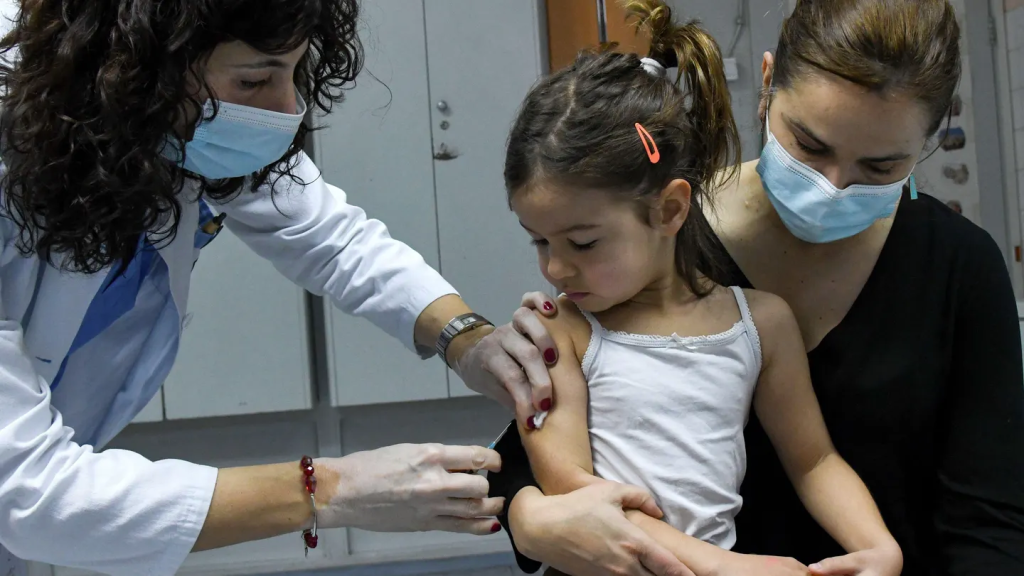WHO has warned health officials to prepare to combat a rising tide of measles as falling vaccination rates and increased travel after the Covid-19 pandemic help the dangerous virus stage an alarming comeback, with countries in Europe declaring national emergencies as U.S. experts monitor growing cases at risk of spiraling into bigger outbreaks.

Key facts
- There has been an “alarming resurgence of measles” in Europe over the past year, warned Hans Kluge, the World Health Organization’s lead for the region, which covers 53 countries across Europe, Israel and parts of Central Asia.
- More than 42,200 people were infected with the virus in 2023, the WHO said, a 45-fold increase from the 941 cases reported in 2022.
- “Vaccination is the only way to protect children from this potentially dangerous disease,” Kluge said, calling for countries to implement “urgent” vaccination campaigns to stop the virus’ spread.
- Kazakhstan and Russia reported the most infections in the countries providing data to the WHO—13,677 and 10,710 infections, respectively—but even nations in Western Europe with globally regarded healthcare systems are facing a worrying surge that is at risk of growing out of hand.
- The U.K. Health Security Agency (UKHSA) declared a major incident on Friday amid the country’s alarming surge of measles cases, with health officials now scrambling to stem the tide with an emergency vaccination campaign.
- There have also been measles outbreaks in France and Austria, and Romania’s health ministry has placed the country on red alert over its growing outbreak.
News peg
“Measles continues to pose a relentlessly increasing threat to children,” the Centers for Disease Control and Prevention said in a report published with the WHO in November.
More countries experienced large outbreaks in 2022 than did the year before, the agencies said, with global measles cases and deaths increasing by 18% and 43%, respectively, over the same time period.
The downturn in measles vaccination, partly spurred by growing hesitancy and partly from the disruption caused by the Covid-19 pandemic, is key to understanding the uptick, the CDC said.
The agency added that while countries with less-developed vaccination efforts are at most risk, all countries are in danger from measles.
Although the U.S. was officially declared to have eliminated measles more than 20 years ago, doctors, clinicians and health experts have warned of worrying cases in recent years.
U.S. cases are still lower than in previous years—the CDC said there were 56 cases of measles reported in 2023—but experts warn that notable clusters like those recently reported in Philadelphia, Virginia and Georgia could indicate the pockets of poor vaccination coverage that may pave the way for wider outbreaks.
Key background
Measles is a viral infection best known for its distinct blotchy, red rash. The impact and danger measles poses has been largely minimized or forgotten in an era of widespread vaccination.
Before vaccines were introduced, however, measles was ubiquitous among children, infecting millions of people in the U.S. every year, killing millions each year globally and sparking major epidemics every few years.
It spreads in the air when people cough, sneeze or breathe and the virus can linger in the air more hours after the departure of an infectious person.
Symptoms can resemble a cold—including a cough, high fever and runny nose, and a rash that usually appears a few days later—and often begin around a week or two after exposure to the virus.
Infections are serious and capable of striking down even healthy children or adults lacking immunity, causing issues like brain swelling and pneumonia that can lead to issues including seizures, deafness, blindness, intellectual disability and death.
Young children, pregnant people and other vulnerable groups are at the highest risk of severe complications.
There are no specific treatments for measles but infection is easily preventable with two doses of a vaccine that decades of rigorous research has consistently shown to be safe and highly effective.
This can be given alone but is often combined with other diseases like mumps and rubella (the MMR shot). As measles is one of the most contagious human diseases known, vaccination rates must be very high to stave off outbreaks, around 95%.
The U.S. has not met this threshold for several years.
This article was first published on forbes.com and all figures are in USD.


